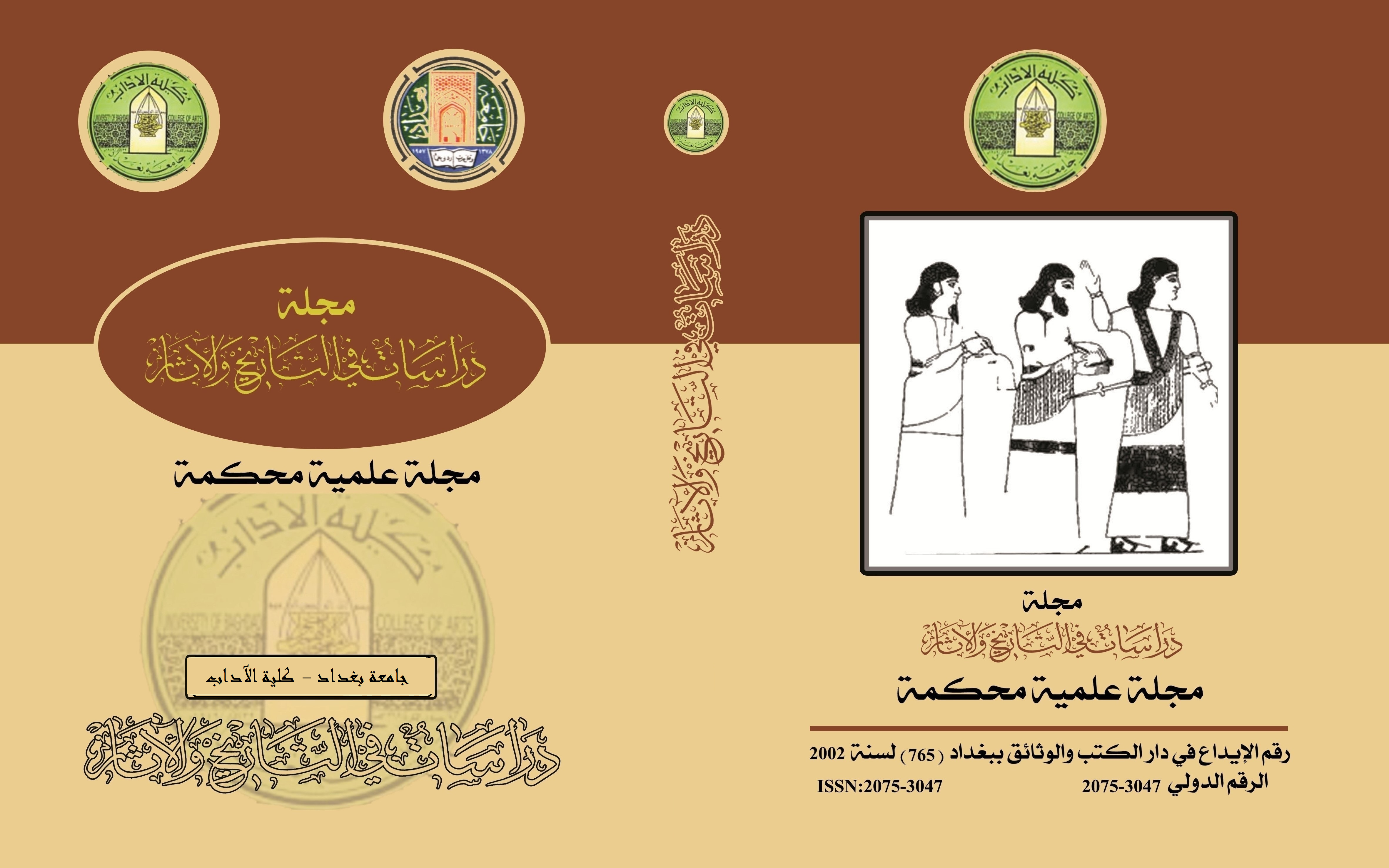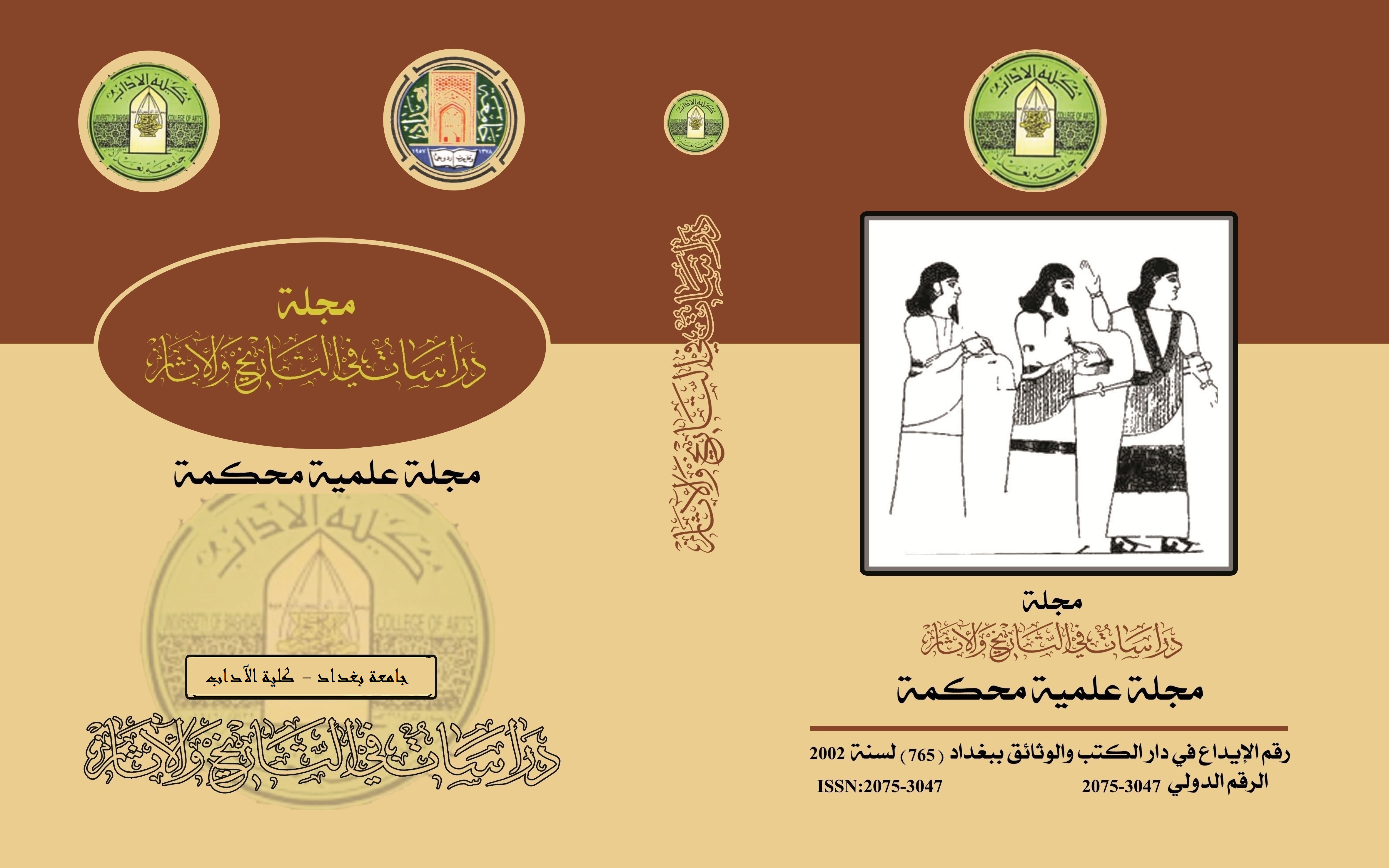الكلب في النصوص المسمارية الطبية
الكلمات المفتاحية:
الكلب، الالهة كولا، الآسو، الآشيبوالملخص
من خلال استقراء بعض النصوص المسمارية فقد كان للكلب حضورا دينيا في بلاد الرافدين من حيث كونه مرافقا شخصيا للكثير من الآلهة ولاسيَّما الإلهة نن-إيسينا/كولا إلهة الطب والشفاء التي عدّ الكلب رمزها الديني، فبحسب رأي بعض الباحثين أن السبب في ذلك هو أن هذا الحيوان عادة ما يقوم بلعق جروحه وهذا بحد ذاته نوع من التطبب لما يحتويه لعابه من مضادات جرثومية تعمل مثل المضادات الحيوية، مع أن الدراسات السريرية العلمية تؤكد على الأثر المحدود في تعزيز الشفاء من لعاب الكلاب.
كما أدت تماثيل الكلب الصغيرة دوراً في المجال من حيث كون بعضها كان لأغراض تعبدية - تكريسية للإلهة كولا ومعابدها بالدرجة الأولى ، إذ أن هذه التماثيل كانت للحماية والوقاية من الأخطار والشرور التي تجلبها الأرواح الشريرة، عن طريق دفن تلك التماثيل، الملونة أحيانا، تحت عتبات القصور والبيوت أو في زوايا الغرف وكما استعملت بعض تلك التماثيل لأغراض دينية – طبية الغاية منها صنع بديل لتحويل الشرور القابعة في المريض نحو التمثال للتخلص منها وكما دخلت العديد من أجزاء جسم الكلب الحي وأفرازاته في صنع الأدوية في بلاد الرافدين.
المراجع
الأحمد، سامي سعيد، (1974) ، مجلة سومر 30 .
الأسود، حكمت بشير، (2008)، أدب الغزل ومشاهد الإثارة في الحضارة العراقية القديمة، دمشق.
بوتيرو، جان، (1990)، بلاد الرافدين الكتابة- العقل- الآلهة، تر: البير أبونا، بغداد.
بوتيرو، جان، (2005) الديانة عند البابلين، تر: وليد الجادر، حلب.
بيطارن إلياس، (ب.ت)، النباتات السومرية والآشورية- البابلية معجم ودراسة مقارنة في ضوء العربية، لبنان.
تقرير لجنة خبراء بمنظمة الصحة العالمية بمشاركة منظمة الاغذية والزراعة، (1983)، ((أمراض الحيوان البكتيرية والفيروسية التي تصيب الإنسان))، جنيف.
توفيق، قيس حازم ، (2018)، العلوم والمعارف في حضارة وادي الرافدين ووادي النيل في العصور القديمة، بغداد.
الدليمي، مؤيد محمد سليمان جعفر، (2006)، دراسة لاهم النباتات والأعشاب الطبية في العراق القديم في ضوء المصادر المسمارية، اطروحة دكتوراه غير منشورة، جامعة الموصل، كلية الاداب.
الرايوي، فاروق ناصر ، (1985) ، حضارة العراق ، ج2.
روثن، مرغريث، (1980)، علوم البابليين، تر: يوسف حبي، بغداد.
ساغز، هاري، (2008)، عظمة آشور, تر: خالد اسعد عيسى واحمد غسان سبانو، دمشق.
سلمان ، مؤيد محمد ، ((2013، مجلة آثار الرافدين، عدد 2.
العلمي، رياض رمضان، (1988)، الدواء في فجر التاريخ إِلى اليوم، الكويت.
العلي، بلال موسى بلال، (2011-2012)، قصة الرمز الديني- دراسة حول الرموز الدينية ودلالالتها في الشرق الأدنى القديم والمسيحية والإسلام وماقبله، (ب. م).
فيروللو، شارل فيروللو، (1990)، أساطير بابل وكنعان، تر: ماجد خير بك، دمشق.
قنواتي، ج. شحاته، (1996)، تاريخ الصيدلة والعقاقير في العهد القديم والعصر الوسيط، بيروت.
كونتينو، جورج ، (1986)، الحياة اليومية في بلاد بابل وآشور، تر: سليم طه التكريتي، ط2، بغداد.
لابات، رينيه، (1968) ، مجلة سومر 24.
الماجدي، خزعل، (1998)، إنجيل بابل .
الماجدي، خزعل، (1998)، بخور الآلهة دراسة في الطب والسحر والأسطورة والدين، عمان.
الماجدي، خزعل، (1998)، متون سومر .
موسكاتي، سبتينو، (1986)، الحضارات السامية القديمة، تر: السيد يعقوب بكر، بيروت.
نبيه، محمد سعيد، (1933) ، كتاب أمراض الكلب في الإنسان، (ب. ت).
المنجد في اللغة العربية والاعلام ( 2008 ) .
English sources and references
Nemet , Karen Rhea - Nejat,( 2002) Daily Life in Ancient Mesopotamia, Massachusetts.
Chalendar ,Vérène, (2016) , ((What reality for animals in the Mesopotamian medical texts? Plant vs animal)), ANTHROPOZOOLOGICA 52,
Goetze, Albrecht, (1955) ((An Incantation against Disease)), JCS 9.
Plantholt , Irene Sibbing , (2017), Black Dogs in Mesopotamia and Beyound in David kertai and olivier Nieuwenhuyse, from the Four Corners of the Earth, Germany.
Wasserman,Nathan, (2008), ((On Leeches, Dogs, and Gods in old Babylonian Medical Incantations)), RA 102.
Abusch, Tzvi and Schwemer, Daniel (2016), Corpus of Mesopotamian Anti- Witchcraft Rituals, Vol. 2, Leiden. Boston.
Dirbas, Hekmat, (2017), The Name is Deer Animal Names in Semitic Onomastics and Name- Giving Traditions: Evidence From Akkadian , North west Semitic, Aad Arabic, Unpublished PhD thesis, University of Leiden.
Tarantola, Arnaud, (2017), ))Four Thousand Years of Concepts Relating to Rabies in Animals and Humans, Its Prevention and Its Cure(( , Tropical Medicine and Infections Disease 5 .
George, A.R. (1993), ((Ninurta- Pāqidāt's Dog Bite, And Notes On Other Comic Tales)), Iraq 55.
Veldhuis, Nick, (1993), ((An Ur III Incantation against the Bite of a Snake, a Scorpion, or a Dog)), ZA 83.
Lenzi, A., ((A Shuill: Gulla)), Reading Akkadian Prayers and Hymns An Introduction,U.S.A, 2011
Translated Arabic sources and references:
Al-Ahmad, Sami Saeed, (1974), Sumer 30 Journal.
Al-Alami, Riyadh Ramadan, (1988), Medicine from the dawn of history to today, Kuwait.
Al-Ali, Bilal Musa Bilal, (2011-2012), The Story of a Religious Symbol - A study on religious symbols and their connotations in the ancient Near East, Christianity, Islam and before it, (B.M.).
Al-Aswad, Hikmat Bashir, (2008), Spinning Literature and Thriller Scenes in the Ancient Iraqi Civilization, Damascus.
Al-Dulaimi, Muayad Muhammad Suleiman Jaafar, (2006), a study of the most important medicinal plants and herbs in ancient Iraq in light of cuneiform sources, unpublished doctoral dissertation, University of Mosul, College of Arts.
Al-Majidi, Khazal, (1998), Sumer Texts.
Al-Majidy, Khazal, (1998), Incense of the Gods, a study of medicine, magic, myth, and religion, Amman.
Al-Majidy, Khazal, (1998), The Gospel of Babylon.
Al-Rawi, Farouk Nasser, (1985), The Civilization of Iraq, Part 2.
Bitar Elias, (nd), Sumerian and Assyrian Plants - Babylonian Dictionary and Comparative Study in Light of Arabia, Lebanon.
Countinino, George, (1986), Daily Life in the Countries of Babylon and Assyria, Tr: Salim Taha Al-Tikriti, 2nd Edition, Baghdad.
Ferrollo, Charles Ferollo, (1990), The Myths of Babeylon and Canaan, Tr: Majid Khair Bey, Damascus.
Labat, Rene, (1968), Sumer 24.
Muscati, Septino, (1986), Ancient Semitic Civilizations, TR: Mr. Yaacoub Bakr, Beirut.
Nabeeh, Muhammad Saeed, (1933), Book on Dog Diseases in Humans, (n.d).
Potero, Jan, (1990), Mesopotamia, Writing - Mind - the Gods, TR: Albert Abouna, Baghdad.
Potero, Jan, (2005) Religion in the Babylonians, Tr: Walid Al-Jader, Aleppo.
Qanawaty,. Shehata, (1996), History of pharmacology and drugs in the Old Testament and the Middle Ages, Beirut.
Report of a committee of experts at the World Health Organization with the participation of the Food and Agriculture Organization, (1983), ((bacterial and viral animal diseases affecting humans)), Geneva.
Rothen, Margareth, (1980), Sciences of the Babylonians, TR: Yusef my love, Baghdad.
Sags, Harry, (2008), The Greatness of Assyria Tr: Khaled Asad Issa and Ahmed Ghassan Spano, Damascus.
Salman, Muayyad Muhammad, (2013), Al-Rafidain Antiquities Journal, Issue 2.
Tawfiq, Qais Hazem, (2018), Science and Knowledge in the Civilization of Mesopotamia and the Nile Valley in Antiquity, Baghdad.
التنزيلات
منشور
إصدار
القسم
الرخصة

هذا العمل مرخص بموجب Creative Commons Attribution 4.0 International License.
:حقوق الطبع والنشر والترخيص
بالنسبة لجميع البحوث المنشورة في مجلة دراسات في التاريخ والآثار، يحتفظ الباحثون بحقوق النشر. يتم ترخيص البحوث بموجب ترخيص Creative Commons CC BY 4.0 المفتوح ، مما يعني أنه يجوز لأي شخص تنزيل البحث وقراءته مجانًا. بالإضافة إلى ذلك ، يجوز إعادة استخدام البحث واقتباسه شريطة أن يتم الاستشهاد المصدر المنشور الأصلي. تتيح هذه الشروط الاستخدام الأقصى لعمل الباحث وعرضه.
:إعادة إنتاج البحوث المنشورة من الناشرين الآخرين
من الضروري للغاية أن يحصل الباحثون على إذن لإعادة إنتاج أي بحث منشورة (أشكال أو مخططات أو جداول أو أي مقتطفات من نص) لا يدخل في نطاق الملكية العامة أو لا يملكون حقوق نشرها. يجب أن يطلب الباحثون إذنًا من مؤلف حقوق النشر (عادة ما يكون الناشر).
يطلب الإذن في الحالات التالية:
بحوثك الخاصة المنشورة من قِبل ناشرين آخرين ولم تحتفظ بحقوق النشر الخاصة بها.
مقتطفات كبيرة من بحوث أي شخص أو سلسلة من البحوث المنشورة.
استخدم الجداول والرسوم البيانية والمخططات والمخططات والأعمال الفنية إذا لم يتم التعديل عليها.
الصور الفوتوغرافية التي لا تملك حقوق لنشرها.
لا يطلب الإذن في الحالات التالية:
إعادة بناء الجدول الخاص بك مع البيانات المنشورة بالفعل في مكان آخر. يرجى ملاحظة أنه في هذه الحالة يجب عليك ذكر مصدر البيانات في شكل "بيانات من ..." أو "مقتبس من ...".
تعتبر عروض الأسعار القصيرة معقولة الاستخدام العادل ، وبالتالي لا تتطلب إذنًا.
الرسوم البيانية ، الرسوم البيانية ، المخططات ، الأعمال الفنية التي أعاد الباحث رسمها بالكامل والتي تم تغييرها بشكل ملحوظ إلى درجة لا تتطلب الاعتراف.
الحصول على إذن
لتجنب التأخير غير الضروري في عملية النشر ، يجب أن تبدأ في الحصول على أذونات في أقرب وقت ممكن. لا يمكن لمجلة الآداب نشر بحث مقتبس من منشورات أخرى دون إذن.
قد يمنحك مالك حقوق الطبع والنشر تعليمات بشأن شكل الإقرار الواجب اتباعه لتوثيق عمله ؛ بخلاف ذلك ، اتبع النمط: "مستنسخ بإذن من [المؤلف] ، [كتاب / المجلة] ؛ نشره [الناشر] ، [السنة]." في نهاية شرح الجدول ، الشكل أو المخطط.



















